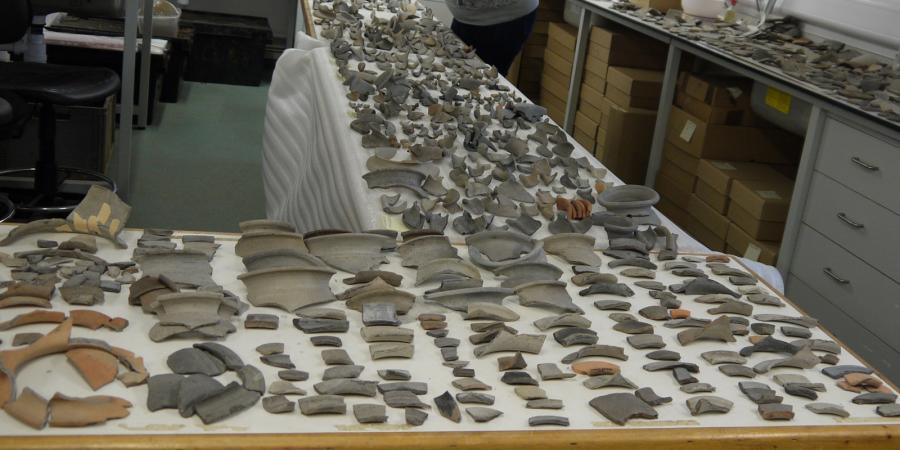Recording of the material from the Romano-British pottery kiln at Congresbury has continued in earnest over the last few months. With over 350 kg of pottery entered onto the database so far, and one single context comprising 11 boxes, there has certainly been plenty to keep me occupied. To the uninitiated eye when these groups are laid out on the worktop they often appear as a grey sea. However, on closer examination the contrast of shades from different pots becomes clearer. A large proportion of the kiln material consists of large fresh sherds and is has been possible to reconstruct sizable sections of the original pots. This is a process that I’ve always found very enjoyable, no doubt stemming from a childhood obsession with both puzzles and colours. A 3D object brings more complexity than a normal puzzle but some of the same principles apply to the task – start with your edges (in the case of a pot your rim and base), split dark and light colours, look for distinctive patterns etc.
Recently Nancy Dixon filmed a time-lapse video to show the reconstruction process with two contrasting jars. Around half of the first jar survives and shows the whole shape of the jar from rim to base (its profile) as it was intended to look. The second vessel, practically complete, is very distorted and is an excellent example of a kiln error or ‘waster’ as they are more commonly known.
